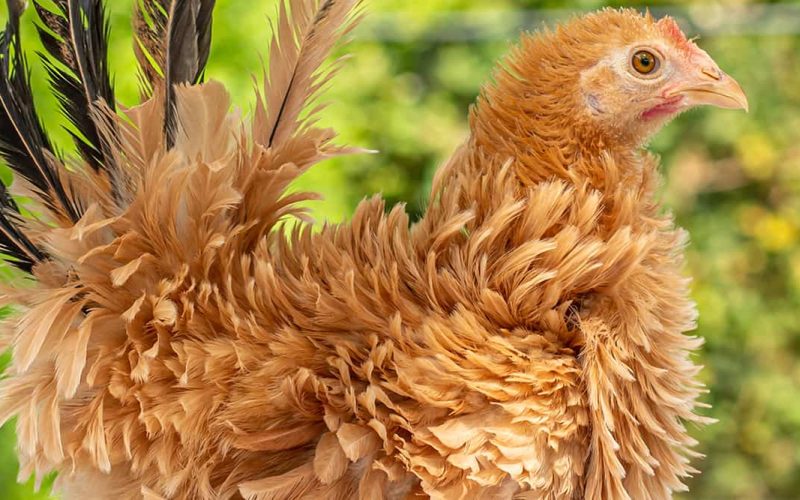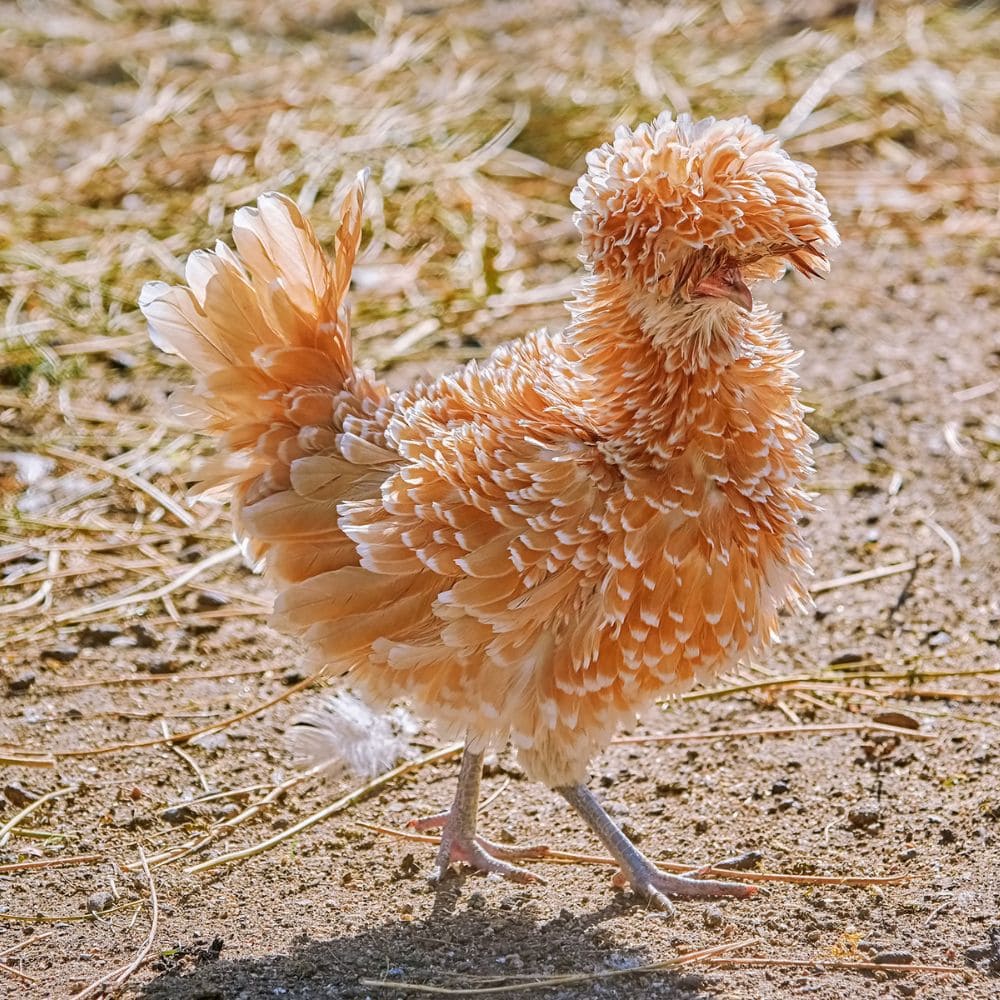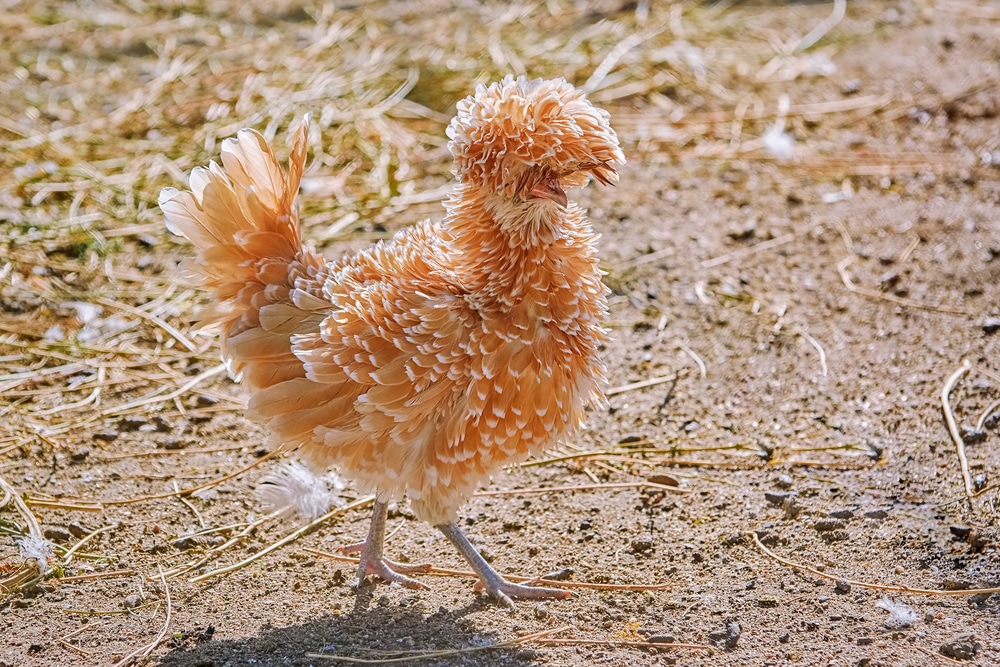Ever wondered what a chicken would look like if it got a perm? The answer, quite charmingly, is the Frizzle chicken, a breed whose defining feature is a coat of feathers that curl outwards, creating a truly unique and eye-catching appearance.
The Frizzle chicken isn't just about looks, however. These birds bring a touch of whimsy and personality to any backyard flock, and their history is as intriguing as their appearance. Let's delve into the fascinating world of Frizzle chickens, exploring their origins, characteristics, care, and the genetic magic that makes them so distinctive.
| Breed Name | Frizzle Chicken |
| Origin | Asia (likely China or the East Indies) |
| Appearance | Curly, outwards-curling feathers; available in various colors and sizes (both bantam and standard) |
| Temperament | Generally friendly, docile, and social |
| Purpose | Ornamental, egg-laying (production varies by breed) |
| Egg Production | Varies; Cochin Frizzles can produce approximately 200 eggs/year, while Japanese Bantams may lay about 75. |
| Feathering | Frizzled (curled outward) due to a dominant gene |
| Notable Characteristics | Unique appearance, popularity as pets, can be bred with other breeds for unique offspring. |
| Size | Bantam and Standard |
| Color of Eggs | Varies by breed |
| Lifespan | Similar to other chicken breeds |
| Reference Link | Backyard Chickens: Frizzle Chickens |
The Frizzle chicken's story begins in Asia, with some evidence pointing towards India or the Philippines as potential origins. The exact location remains somewhat shrouded in the mists of time, but it's clear that these birds, with their unusual feathering, captured the attention of people early on. The first documented mention of Frizzles dates back to the 1600s when they were transported to Europe as breeding stock, solidifying their place in poultry history. Charles Darwin even made note of them, calling them "Caffie fowl" in his writings, which highlights their early presence.
The defining feature of the Frizzle is, of course, their feathers. Instead of lying flat and neatly against the body, these feathers curl outwards, giving the chicken a fluffy, almost wind-swept appearance. This is caused by a dominant gene, known as the "f" gene. A bird needs only one copy of this gene to exhibit the frizzled trait. Because of the genetic trait, the Frizzle often appears puffier and rounder than other chickens.
This "f" gene affects the feather's structure. The barbs, tiny filaments that interlock to create a smooth feather surface, are somehow altered, preventing the feather from lying flat. This results in the characteristic curl, giving each bird its own unique look. The frizzled feathers don't just affect appearance; they also can influence how a Frizzle chicken handles environmental conditions. The curled feathers may not provide as much insulation as standard feathers, meaning extra care is sometimes needed to protect the bird from cold or wet weather.
While the Frizzle gene can manifest in many different breeds, the term "Frizzle" doesn't designate a separate breed in the same way as, say, a Rhode Island Red. It's more accurate to think of it as a feather type that can be present within a variety of established chicken breeds. You might find Frizzled Cochins, Frizzled Polish, or Frizzled Silkies (often called "Sizzles," which combines "Silkie" and "Frizzle"). The most commonly seen Frizzle chickens are based on Cochins, Plymouth Rocks, Japanese Bantams, and Polish chickens. The gene simply changes the feather texture.
Frizzle chickens come in both bantam (miniature) and standard sizes, and the bantam variety is particularly popular. Their unique appearance makes them a popular choice as pets and ornamental birds. Their charming personality adds to their appeal, and their unique appearance can light up any backyard. The gene has been recognized as a distinct breed in a number of European countries and Australia.
Beyond their striking looks, Frizzle chickens also offer the benefits of egg production. Frizzle chicken breeds do lay eggs, however, some breeds produce more than others. The number of eggs laid will depend on the breed. For example, Cochin Frizzles will produce about 200 eggs a year, while Japanese Bantam Frizzles will only lay about 75. But, they are generally considered to be on the lower end of egg-laying productivity when compared to other breeds. The color of the eggs they lay varies depending on the breed.
When it comes to care, Frizzle chickens require similar attention to other breeds, but with a few extra considerations. Their feathers can be more susceptible to moisture and cold, so providing adequate shelter and protection from the elements is important. They also require protection from predators, proper nutrition, clean water, and a safe, spacious coop. Frizzles are active and curious birds and make excellent pets.
Breeding Frizzles can be an exciting venture, especially for those interested in creating beautiful offspring with unique features. As the frizzling gene is dominant, breeding a Frizzle with a non-Frizzle usually results in some frizzled chicks. Breeding two Frizzles together, however, can sometimes lead to "frazzled" chicks, which have severely curled feathers and may experience health issues. It's a process that combines genetics with a love for these feathered friends.
The main difference between a Frizzle and a Sizzle chicken is that Frizzles can be any breed with the Frizzle gene, while Sizzles are always Silkies with the same gene. Silkies, with their fluffy feathers that lack the barbicels found in many other breeds, further enhance the frizzled look, creating a bird with an even more distinctive appearance. Just as a Polish carrying the frizzle gene is a Polish frizzle.
In conclusion, the Frizzle chicken is more than just a pretty face. They are social and friendly birds whose unique appearance, the result of a fascinating genetic trait, has made them a favorite among backyard chicken enthusiasts. From their origins in Asia to their popularity as pets, Frizzles embody the beauty and diversity of the avian world. If you are looking for a chicken that is sure to stand out from the flock, then the Frizzle chicken is a great choice. Their curly feathers will certainly make them the center of attention in any backyard.


